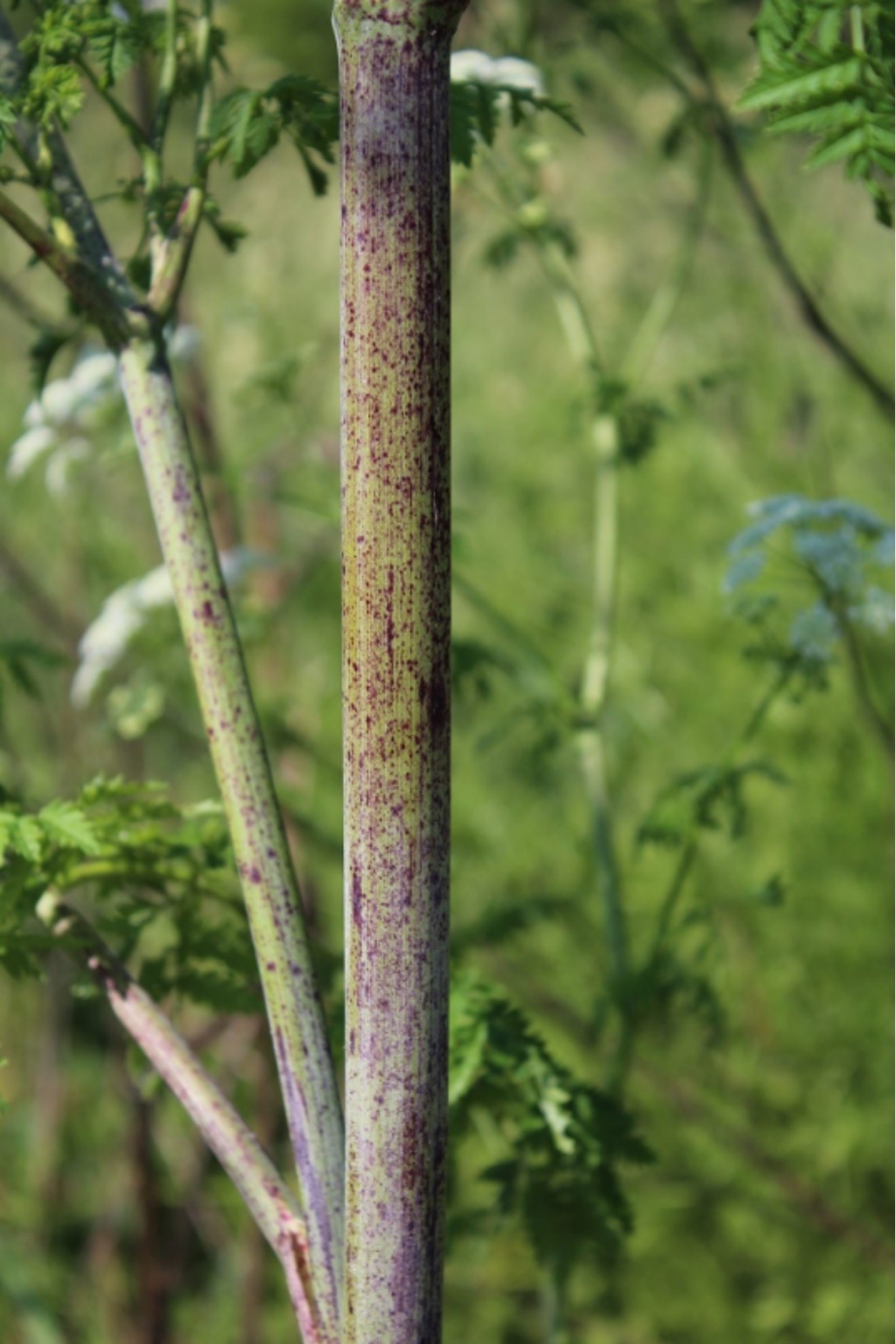By Lauren Richards, Natural Resource Specialist
Summer has officially arrived! As everyone is enjoying their time outside playing in the yard, gardening and hiking we tend to keep a watchful eye out for things that may cause us harm, including ticks and poison ivy. However, many may be unaware of a plant that can cause serious harm to humans and animals.
Poison hemlock (Conium maculatum) is a noxious weed in the carrot family that has been seen growing all over Ohio. The plant is native to Eurasia and was introduced in the 1800s as an ornamental plant to North America. It has become naturalized across the country, often seen growing along roadsides, ditches, vacant lots, fields, pastures, and stream banks. While it is very easy to become fearful of something that may cause harm to us, the best solution is to inform and educate ourselves on this plant so that we can correctly identify it.
Toxicity
All parts of the plant contain toxic alkaloids that can cause respiratory failure in humans and animals if ingested. The seeds and roots are the most toxic part of the plant, and the dead stems can remain toxic for up to three years.
While the main danger comes from consuming the plant, poisoning can also occur from skin contact and inhalation. Symptoms of poisoning include dilated pupils, trembling, dizziness, muscle pain/paralysis, convulsions, respiratory failure, and death. Symptoms can appear within twenty minutes to three hours after consumption. If you have come in contact with poison hemlock and are experiencing symptoms, contact emergency services to receive medical attention.
Okay, phew! Now that the scary (yet informative and necessary!) part is out of the way, let’s learn about how to identify and control poison hemlock.
Plant Identification
Poison hemlock is a biennial flowering plant that first appears in spring from late April to May and begins to flower in late May into June. The plant continues to form through August. Within its first year the plant is low growing (approximately 1-2 feet tall) as it develops its root system, stem and leaves. In its second year of growth the plant “bolts”, growing up to 6-10 feet tall before it flowers and produces seeds.
Stems
The stems of poison hemlock are light green in color with purple blotches and streaks. The stem is hairless and hollow.
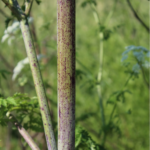
Leaves
The leaves are fern like in their appearance, have alternate arrangement, are compounded, serrated and taper to a point.
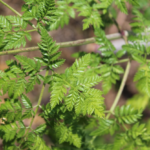
Flowers
Tiny white flowers with five petals that are formed in small umbrella shaped clusters.
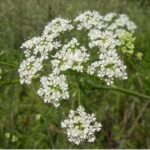
Seeds
Seeds are light brown in color and oval shaped. One side of the seed is flat while the opposite side has wavy ridges that protrude out. A single plant can produce 30,000 to 40,000 seeds that are viable in the soil seed bank for up to 5 years.
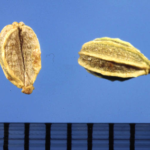
Lookalikes
Poison hemlock can often be confused for the edible plant wild carrot (Daucus carota) also known as Queen Anne’s lace. The main distinguishing feature when comparing the wild carrot and poison hemlock plants lies in the appearance of the stem. Wild carrot has green stems that are hairy whereas poison hemlock has hairless stems that have purple blotches. Wild carrot flowers are densely packed into a single umbrella shaped cluster.
Wild Carrot vs Poison Hemlock
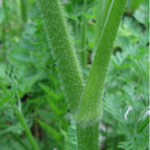

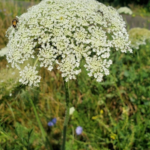
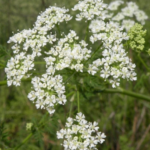
Management
If poison hemlock is growing on your property early control methods are preferred to prevent further spread. Physical control methods include cutting or pulling the plant early on in its growth stages. If this method is implemented, please protect yourself by wearing gloves and clothing that covers your skin including long sleeve shirts and pants. Wash all tools that are used in cutting the plant. It is important to use caution when controlling with physical methods as toxins can be inhaled and the sap of the plant can be absorbed through the skin.
Chemical control methods can also be implemented through the application of herbicides. When applying herbicides always read and follow the labels instructions for application, spray rates, spray conditions, and personal protective gear to wear. Be mindful of surrounding vegetation that could be sprayed and killed in the process of treatment.
If you would like more information about poison hemlock and its look-a-likes visit the Ohio State University Extension Office page here (https://bygl.osu.edu/node/1763).

